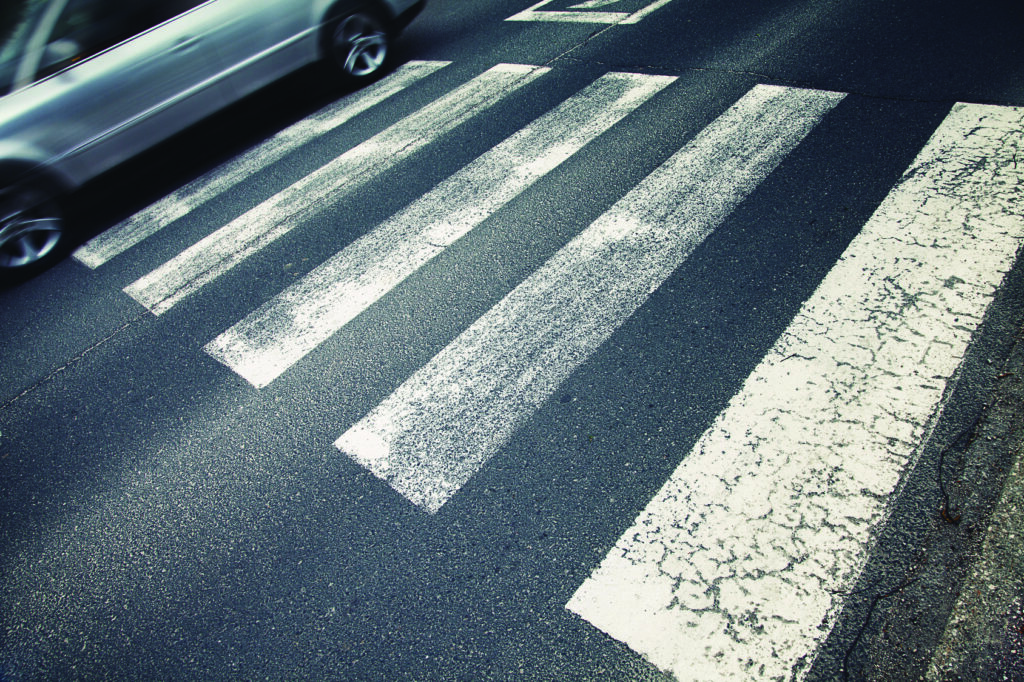Test Your Knowledge of Pedestrian Safety and Prevent a Fatal Injury or Death!
Polk County ranks at the top of many lists, but one high ranking that definitely needs to decrease is Polk County’s instances of pedestrian deaths. In such a beautiful climate, there is always going to be a high number of pedestrians sharing the road with vehicles. Unfortunately, pedestrian injury and fatality rates have been steadily rising in both Polk County and the nation as of 2012, the latest year figures are available. To help protect your loved ones— and curb pedestrian deaths in Polk County— test your knowledge of pedestrian safety tips and information that could help save a life!
1. There were how many pedestrian deaths nationwide in 2012?
- 2,371
- 3,569
- 4,743
- 5,000
2. True or False? A pedestrian is defined as “any person on foot, walking, running, jogging, hiking, sitting or lying down who is involved in a motor vehicle traffic crash.”
3. Which shows the rate of pedestrian deaths for every 100,000 citizens in Polk County in 2012?
- 1.6
- 2.8
- 2.9
- 3.2
4. Under what conditions (choose all that apply) do pedestrian fatalities most often occur?
- Urban settings
- At non-intersection stretches of roadway
- Normal weather conditions
- Nighttime: 6 p.m. to 6 a.m.
- All of the Above
5. Which shows the breakdown of pedestrian fatalities by age?
- Age 0-9: three percent, 10-20: eight percent, 21-34: 21 percent, 35-44: 12 percent, 45-64: 34 percent, 65+: 20 percent
- Age 0-9: 10 percent, 10-20: 33 percent, 21-34: 15 percent, 35-44: 17 percent, 45-64: 20 percent, 65+: five percent
- Age 0-9: one percent, 10-20: two percent, 21-34: 40 percent, 35-44: 20 percent, 45-64: 20 percent, 65+: 17 percent
- Age 0-9: 5 percent, 10-20: 10 percent, 21-34: 11 percent, 35-44: 50 percent, 45-64: 14 percent, 65+: 10 percent
6. Which of the following are tips to help kids be safe pedestrians? (Choose all that apply)
- Kids 10 and younger must walk with an adult
- Teach looking left, right, then left again to cross the street
- Bike helmets and gear are always worn
- Dispel myths about cars, such as “if I can see the car, the driver can see me” and “cars can stop instantly”
- All of the Above
7. True or False? A WALK light at an intersection means it is 100 percent safe for pedestrians to cross.
8. Which of the following are tips to help adults and seniors to be safer as pedestrians? (Choose all that apply)
- Walk smart: wear brightly colored clothing, comfortable shoes, walk with a friend, etc.
- Plan routes to avoid hazardous crossings
- Always look to determine safety; don’t rely on drivers, intersections, traffic signals, etc.
- Leave enough time to cross intersections
- All of the Above
Resources: Information provided by The National Highway Traffic Safety Administration at www.nhtsa.gov/nhtsa/everyoneisapedestrian/index.html and Healthy Tampa Bay at www.healthytampabay.com
ANSWERS
Answer 1. C) 4,743. According to the National Highway Traffic Safety Administration (NHTSA), in 2012, there was a pedestrian death approximately every two hours.
Answer 2. True. The definition is used by the NHTSA.
Answer 3. B) 2.8. According to data provided by Healthy Tampa Bay, in Polk County there were 2.8 pedestrian deaths for every 100,000 people living in the county.
Answer 4. E) All of the Above. According to the NHTSA, nearly 75 percent of pedestrian fatalities occur in urban areas; 70 percent occur at non-intersections; 89 percent occur during sunny or cloudy weather conditions; and 70 percent occur during nighttime.
Answer 5. A) Age 0-9: three percent, 10-20: eight percent, 21-34: 21 percent, 35-44: 12 percent, 45-64: 34 percent, 65+: 20 percent. According to the NHTSA, adults from age 45 to 64 comprised the highest percentage of pedestrian deaths in 2012 at 34 percent; the 21 to 34 age group was second highest at 21 percent.
Answer 6. E) All of the Above. Child pedestrian safety requires teaching and modeling good behaviors when it comes to the rules of the road.
Answer 7. False. A WALK light for pedestrians at a crosswalk generally indicates that oncoming traffic must stop, but also that vehicles that are turning now have a green light to turn through the intersection. Pedestrians should always check that vehicles are not about to drive through the intersection before crossing.
Answer 8. E) All of the Above. According to the NHTSA, pedestrians who are adults and seniors should “See and Be Seen” to be a safer.
CREDITS
by ERIKA ALDRICH
